Biofilm-associated proteins: news from Acinetobacter
- PMID: 26572057
- PMCID: PMC4647330
- DOI: 10.1186/s12864-015-2136-6
Biofilm-associated proteins: news from Acinetobacter
Abstract
Background: A giant protein called BAP (biofilm-associated protein) plays a role in biofilm formation and adhesion to host cells in A. baumannii. Most of the protein is made by arrays of 80-110 aa modules featuring immunoglobulin-like (Ig-like) motifs.
Results: The survey of 541 A. baumannii sequenced strains belonging to 108 STs (sequence types) revealed that BAP is highly polymorphic, distinguishable in three main types for changes both in the repetitive and the COOH region. Analyzing the different STs, we found that 29 % feature type-1, 40 % type-2 BAP, 11 % type-3 BAP, 20 % lack BAP. The type-3 variant is restricted to A. baumannii, type-1 and type-2 BAP have been identified also in other species of the Acinetobacter calcoaceticus-baumannii (ACB) complex. A. calcoaceticus and A. pittii also encode BAP-like proteins in which Ig-like repeats are replaced by long tracts of alternating serine and aspartic acid residues. We have identified in species of the ACB complex two additional proteins, BLP1 and BLP2 (BAP-like proteins 1 and 2) which feature Ig-like repeats, share with BAP a sequence motif at the NH2 terminus, and are similarly expressed in stationary growth phase. The knock-out of either BLP1 or BLP2 genes of the A. baumannii ST1 AYE strain severely affected biofilm formation, as measured by comparing biofilm biomass and thickness, and adherence to epithelial cells. BLP1 is missing in the majority of type-3 BAP strains. BLP2 is largely conserved, but is frequently missing in BAP-negative cells.
Conclusions: Multiple proteins sharing Ig-like repeats seem to be involved in biofilm formation. The uneven distribution of the different BAP types, BLP1, and BLP2 is highly indicative that alternative protein complexes involved in biofilm formation are assembled in different A. baumannii strains.
Figures
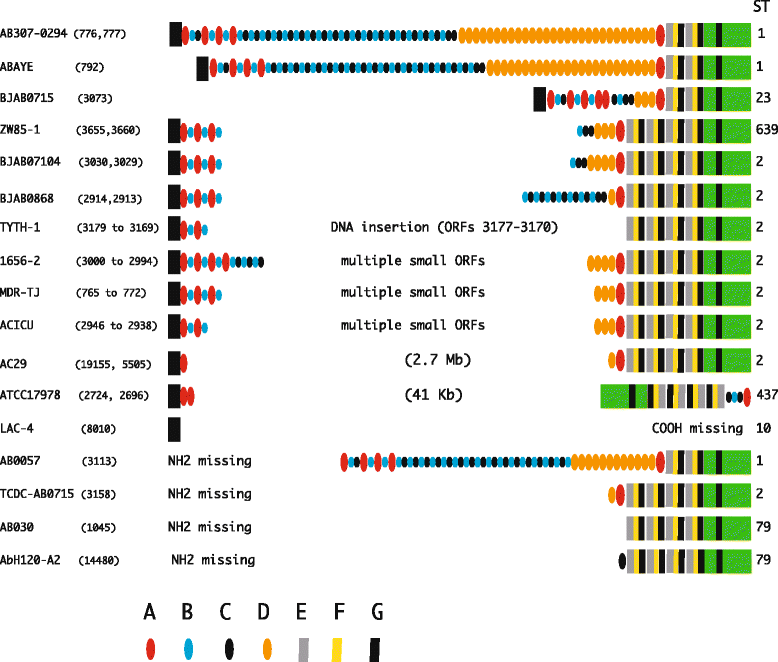

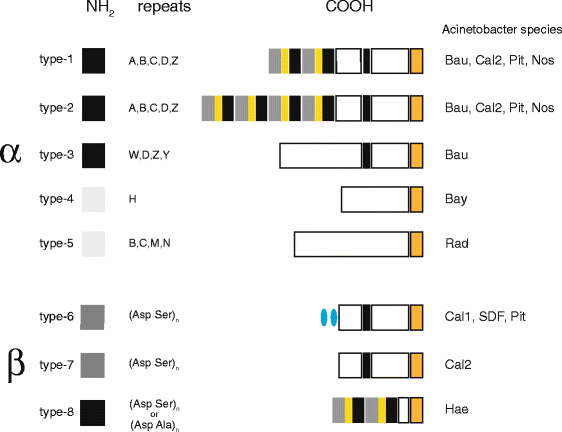

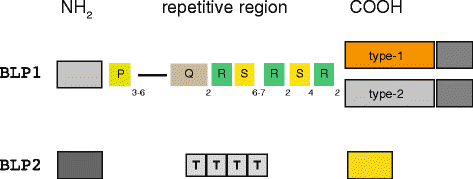

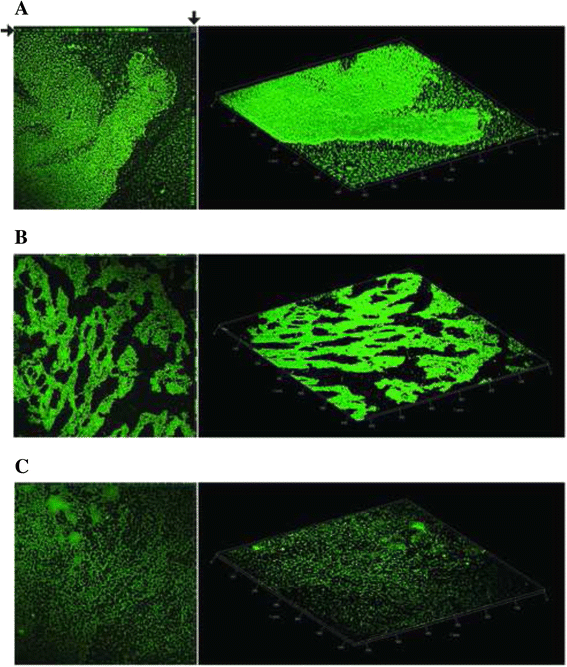
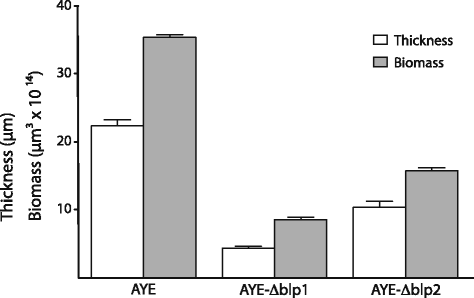

Similar articles
-
Molecular analysis of the Acinetobacter baumannii biofilm-associated protein.Appl Environ Microbiol. 2013 Nov;79(21):6535-43. doi: 10.1128/AEM.01402-13. Epub 2013 Aug 16. Appl Environ Microbiol. 2013. PMID: 23956398 Free PMC article.
-
In silico analysis of antibody triggering biofilm associated protein in Acinetobacter baumannii.J Theor Biol. 2010 Sep 21;266(2):275-90. doi: 10.1016/j.jtbi.2010.06.014. Epub 2010 Jun 23. J Theor Biol. 2010. PMID: 20600143
-
Exploring the evolutionary and pathogenic role of Acinetobacter baumannii biofilm-associated protein (Bap) through in silico structural modeling.Arch Microbiol. 2024 May 18;206(6):267. doi: 10.1007/s00203-024-03992-8. Arch Microbiol. 2024. PMID: 38762620
-
Quorum sensing in Acinetobacter: an emerging pathogen.Crit Rev Microbiol. 2010 Nov;36(4):349-60. doi: 10.3109/1040841X.2010.512269. Crit Rev Microbiol. 2010. PMID: 20846031 Review.
-
Biofilm formation in Acinetobacter baumannii.New Microbiol. 2014 Apr;37(2):119-27. Epub 2014 Apr 1. New Microbiol. 2014. PMID: 24858639 Review.
Cited by
-
Subunit vaccines for Acinetobacter baumannii.Front Immunol. 2023 Jan 12;13:1088130. doi: 10.3389/fimmu.2022.1088130. eCollection 2022. Front Immunol. 2023. PMID: 36713441 Free PMC article. Review.
-
Deciphering the virulence factors, regulation, and immune response to Acinetobacter baumannii infection.Front Cell Infect Microbiol. 2023 Feb 23;13:1053968. doi: 10.3389/fcimb.2023.1053968. eCollection 2023. Front Cell Infect Microbiol. 2023. PMID: 36968113 Free PMC article. Review.
-
Mapping Global Prevalence of Acinetobacter baumannii and Recent Vaccine Development to Tackle It.Vaccines (Basel). 2021 Jun 1;9(6):570. doi: 10.3390/vaccines9060570. Vaccines (Basel). 2021. PMID: 34205838 Free PMC article. Review.
-
Expression of bap gene in multidrug-resistant and biofilm-producing Acinetobacter baumannii clinical isolates.BMC Microbiol. 2025 Mar 1;25(1):108. doi: 10.1186/s12866-025-03806-x. BMC Microbiol. 2025. PMID: 40025431 Free PMC article.
-
Cas3 of type I-Fa CRISPR-Cas system upregulates bacterial biofilm formation and virulence in Acinetobacter baumannii.Commun Biol. 2025 May 14;8(1):750. doi: 10.1038/s42003-025-08124-6. Commun Biol. 2025. PMID: 40369106 Free PMC article.
References
-
- Giannouli M, Antunes LCS, Marchetti V, Triassi M, Visca P, Zarrilli R. Virulence-related traits of epidemic Acinetobacter baumannii strains belonging to the international clonal lineages I-III and to the emerging genotypes ST25 and ST78. BMC Infect Dis. 2013;13:282. doi: 10.1186/1471-2334-13-282. - DOI - PMC - PubMed
-
- Longo F, Vuotto C, Donelli G. Biofilm formation in Acinetobacter baumannii. New Microbiol. 2014;37:119–27. - PubMed
Publication types
MeSH terms
Substances
LinkOut - more resources
Full Text Sources
Other Literature Sources

